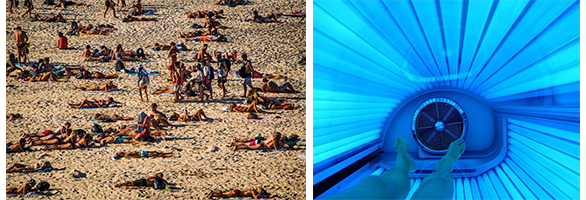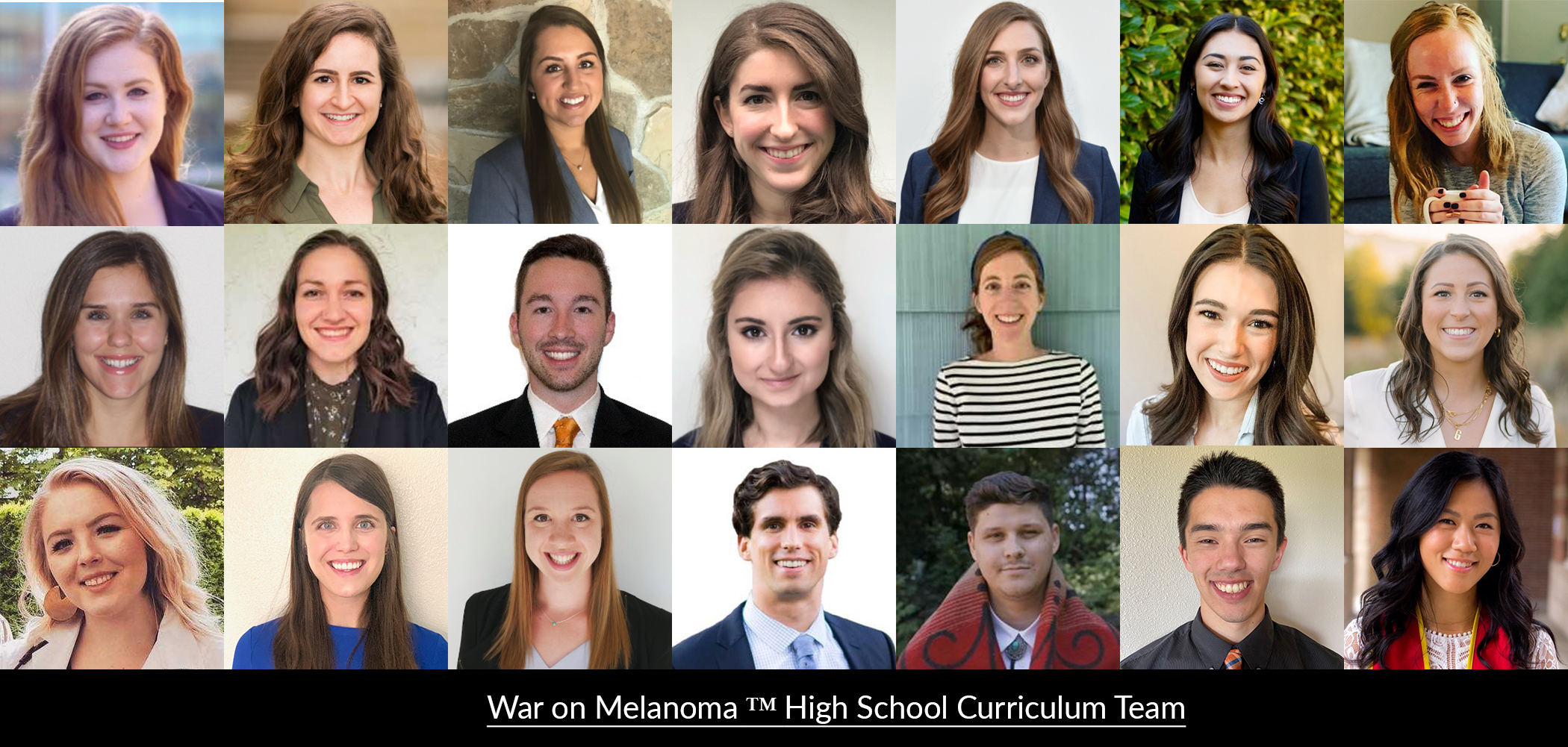High School Outreach Program

Protecting our next generation from melanoma skin cancer
Our mission is to eliminate melanoma-related deaths. With an emphasis on early detection strategies, we've chosen high school educational outreach as a critical method to spread awareness of melanoma. With the help of this next generation of Oregonians, we can have the greatest impact and in turn save lives.
To help reach our goal of educating students about sun safety and skin cancer detection and prevention, we have developed a 50 minute lesson plan for implementation into Oregon high schools. In light of challenges due to COVID-19, we're excited to also offer both an in-person, and an asynchronous online version of our lesson plan. You'll be able to select your lesson plan preference in the request form.
Melanoma Fast Facts:
- Oregon ranks in the top 10 for both incidence and deaths from melanoma, for both men and women. (CDC)
- Sun damage is cumulative; excessive sun exposure during childhood can contribute to skin cancer risk later in life. (Skin Cancer Foundation)
- On age related cancers, melanoma is the #1 most diagnosed cancer among 25 to 29 year olds in the United States. For 15 to 29 year olds, it is the 3rd most common for men and 4th most common for women.
Melanoma is the most deadly form of skin cancer, and rates have continued to rise nationwide. Conversely, melanoma is a unique cancer in that personal behaviors can drastically reduce the chance of getting or dying from a melanoma. The greater we can increase awareness on melanoma prevention and early detection, the more lives we can save from this disease.
- Educate Oregon high school students about melanoma early detection and prevention
- Provide students with a basic understanding of how UV exposure can lead to skin cancers
- Promote sun safety and healthy habits for UV exposure and educate students about melanoma risk factors
- Provide students with a framework for checking their moles and facilitate creation of a personal action plan to protect their skin and watch for signs of skin cancer
Teachers (or volunteers - more information coming soon) will be provided with a full lesson plan script.
The lesson plan is designed to take 50 minutes from start to finish and incorporates informational slides, a testimony from a melanoma survivor, interactive learning, and action plan creation:
- Pre- and post-test survey
- Students who opt-in will take a brief survey to assess sun safety and melanoma knowledge and attitudes. This survey will be given immediately prior to lesson delivery and following completion of the lesson plan. Learn more about the function and importance of these surveys here .
- Picture sort:
- Students will sort pictures of moles into two piles: either “normal” or “abnormal.” Sorting will occur twice- once at the beginning of the learning objective that addresses melanoma risk, and once after students learn the ABCDEs of melanoma detection.

- Gallery walk
- The gallery walk will take place at the beginning of the lesson plan. Photos relating to UV exposure, sun safety, and melanoma risk will be posted around the room. Students will be asked to walk around silently and post their thoughts on sticky notes next to each picture. The class will then discuss each image together.

- Action plan
- At the end of the lesson, students will create an action plan. These action plans are intended to be students’ personal goals for skin protection and melanoma detection. Click here to see a sample of the Action Plan Worksheet.
Included with the lesson plan are anonymous before and after surveys for students. These surveys help us keep track of the impact of our lesson plan and allow us to continue to make improvements moving forward.
Students may opt out of survey participation if they so choose. Click here for more information (IRB#19372).
The War on Melanoma High School Outreach Program is an effort led by OHSU medical students in conjunction with the OHSU Department of Dermatology and Knight Cancer Institute's Melanoma Program.

Program Leadership:
Gina Calco
Jonathan Sisley
Marketing Team:
Amanda Wade
Data Management Team:
Nina Kostur
Stephen Aldous
Rishi Seshadri
Curriculum Development Team:
Jade Young
Mai-Loan Nguyen
Hannah Zhao
Allied-PreHealth Volunteer Team:
Abby Shettig
Bailey Reynolds
Mani Woodward
Moira Shea
Anthony Gutierrez
School Communications Team:
Ashley Reese
Eleanor McCreary
Candace Chan
Kara Cheung
Elena Paz Munoz
Native American Outreach:
Jacob Smith
Faculty and Resident Advisors
Elizabeth Berry, M.D.
Carter Haag, M.D.
Elizabeth Stoos, M.Ed.
Emile Latour, M.S.
Jodi Lapidus Ph.D.
Adrienne Zell Ph.D.
Graduated Members:
Victoria Orfaly
Erin Urbanowicz
Adam Roscher
Nicole Santucci
Claire Turina
Mary Ryan
Ashley Reese
Gresham High School
Ridgeview High School
Rex Putnam High School
Sprague High School
North Bend High School
Center for Advanced Learning
La Grande High School
Paisley Charter School
Pine Eagle Charter School
Sheldon High School
Lakeview High School
Cascade High School
Lincoln City Career Tech High School
Corvallis High School
Knappa High School
Sherwood High School
Springwater Trail
David Douglas
Heppner High School
Gresham High School
Cleveland High School
Silverton High School
Lakeridge High School
Crescent Valley High School
Redmond Proficiency Academy
Sam Barlow High School
Philomath High School
Columbia Composite Squadron, Civil Air Patrol -- not a school but an organization serving youth ages 12+
Warrenton High School